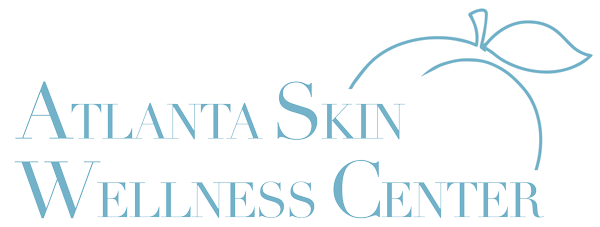
Most beauty aficionados have been there: You follow an influencer on social media; they share a trend with “wow” results; and you think, maybe I’ll try that. While some cutting-edge brands and influencers offer sound advice, other trends can be ineffective at best or harmful at worst. Here, we tap board-certified dermatologist Dr. Elise Barnett, founder of Atlanta Skin Wellness in Sandy Springs, for her expertise to separate beauty fact from fiction. Bottom line: If you’re unsure of a new-to-you beauty trend, it’s always safest to ask a trusted doctor.
Can Botox really be preventative?
Absolutely. We use the muscles in our faces to make expressions, and over time those muscles can form lines (forehead, crow’s feet and frown lines). By relaxing those muscles [with Botox], they aren’t able to constantly worsen those wrinkles or form them at all. You know what they say: an ounce of prevention is worth a pound of cure!
Is the latest trend of face taping that uses kinesiology tape strategically to soften wrinkles safe? Does it help?
Although I think taping the face is probably not a good idea as it could lead to other problems such as dermatitis due to the adhesive in the tape, I do think products like this are temporarily effective, albeit impractical, as they prevent the muscles from contracting and creating wrinkles. A silicone patch may be especially helpful if used overnight for “sleep lines”— lines created not by movement of muscles but by creases formed when sleeping on one’s stomach or side. Wearing these during the day is usually not practical but applying to sleep can help.
Does drinking or eating collagen have an impact on beauty (hair, skin, nails)?
At this time, there isn’t enough evidence for me to personally recommend oral collagen supplements, and studies are mixed.
We know fermented foods can be good for gut health, but now there are beauty products with fermented ingredients and probiotics. How is this beneficial, or is it?
I don’t necessarily recommend anything fermented or any product containing bacteria, but I do recommend products that contain prebiotics. These give the skin the nutrients it needs to establish a healthy microbiome that can reduce symptoms of inflammation and calm diseases such as seborrheic dermatitis (dandruff) on the skin and rosacea.
Slugging (that is, applying a liberal amount of an occlusive emollient such as Vaseline or a super-thick moisturizer) is viral on TikTok. Does it have merit?
It depends on the person. For those with excessively dry skin or patients who are taking medications such as isotretinoin, which tends to make the skin dry and sensitive, this could have some benefit. I would never recommend “slugging” for anyone with acne-prone skin or clogged pores, as this could make matters worse.
Do at-home microcurrent devices really sculpt your face by working out the muscles?
It depends on the device itself, but the NuFACE has nice results, and they are almost instant. By stimulating certain facial muscles, the jaw can become more defined and the brows lifted. You must continue to use it in order to reap the benefits.
Skin cycling, or rotating the products we use, is a huge TikTok trend. Should we be doing it?
Most dermatologists have been recommending “skin cycling” for years now, although we haven’t always called it that. Retin-A, the gold standard for anti-aging, can be quite irritating, causing many to give up. Giving your skin little breaks by skipping a night or two between each use can help with tolerability and long-term compliance.

